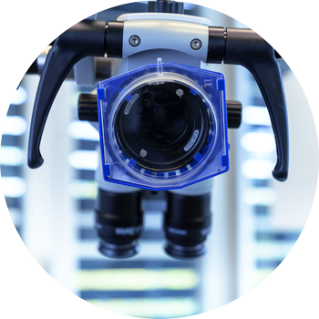
An endodontic treatment is performed in order to retain teeth with nerves that are irreversibly damaged or already dead.
The nerve can become damaged as a result of many things, however usually there is caries disease present, which has penetrated so far into the tooth that the root canal has been damaged.
Endodontic treatment is a very precise treatment which requires a bacteria-free environment. For this reason, the tooth to be treated is isolated with the aid of a dental dam.

The root canal is exposed so that it can be chemically cleaned with a solution, and is then mechanically expanded using instruments. As this involves very fine structures and the work must be very precise, surgical loupes or a microscope are used during root canal treatment. Furthermore, the individual treatment steps of the root canal treatment are checked with the aid of X-ray images. Medicated wadding is often necessary so that the bacteria present around the root canal system are removed. Once the tooth is pain free, the next step in root canal treatment is filling the cleaned and prepared root canal.
The endodontic treatment ends with reconstruction of the tooth crown. Crowns or partial crowns are often used because in many cases a large part of the tooth has been milled away during the treatment. This guarantees that the tooth is sufficiently stabilised.
Endodontic treatment is generally painless through the use of a local anaesthetic. However, the teeth can react quite sensitively during the first few days after the root canal treatment, but this subsides again on its own.